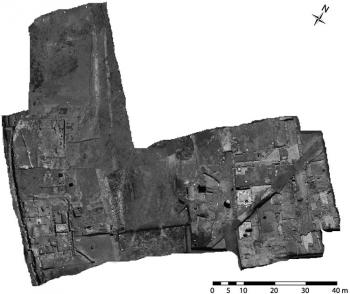American Journal of Archaeology | The Journal of the Archaeological Institute of America
You are here
Archaeological Research at Gabii, Italy: The Gabii Project Excavations, 2009–2011
January 2014 (118.1)
Archaeological Research at Gabii, Italy: The Gabii Project Excavations, 2009–2011
Since the summer of 2009, the ancient site of Gabii has been the focus of excavations conducted by the University of Michigan. Stratigraphic investigations near the urban core are revealing the complex sequence of occupation in this Latin city, which emerged in the Early Iron Age. The spatial distribution of intramural burials of the Orientalizing and Archaic periods shows that the settlement was initially organized in separate habitation clusters. The city was provided with monumental fortifications by the late seventh or early sixth century B.C.E., but its layout was radically modified in the fifth century B.C.E., and a uniform orthogonal plan was imposed across the entire site. Three domestic structures dating to the Middle Republican period have been identified in two of the city blocks. Significant modifications of this sector of Gabii are attested from the first century B.C.E. Excavation data confirm that the city began to decline dramatically at this time. Areas in the upper part of the site were taken up for industrial activities or transformed into burial grounds and were finally abandoned in the Late Imperial period. These preliminary results document how ancient cities in the region developed and decayed; the findings have also provided the basis for further research on-site in 2012–2014.
Archaeological Research at Gabii, Italy: The Gabii Project Excavations, 2009–2011
By Marcello Mogetta and Jeffrey A. Becker
American Journal of Archaeology Vol. 118, No. 1 (January 2014), pp. 171–188
DOI: 10.3764/aja.118.1.0171
© 2014 Archaeological Institute of America


